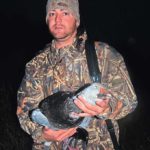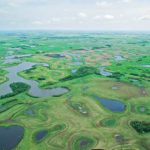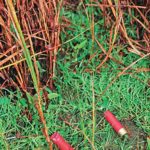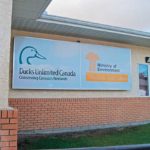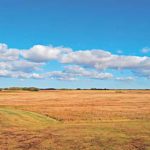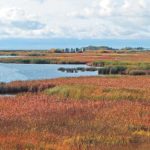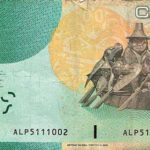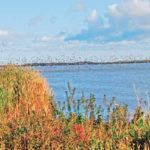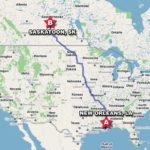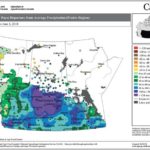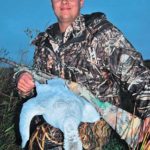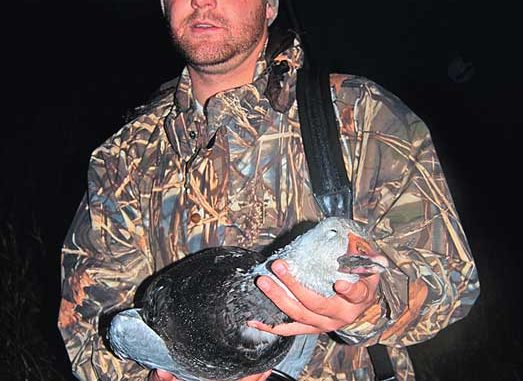
If you’re an avid waterfowler, and you’ve never made a trip to the breeding grounds, start planning one now. It’s cheaper than you think, and you won’t believe what you’re in for.
When it comes to Louisiana, I’m more biased than an NBA ref with a dozen Benjamins riding on the game he’s officiating.
Louisiana has the best fishing.
Louisiana has the best food.
Louisiana has the best outdoor magazine. 😉
Louisiana has the best crabbing.
Louisiana has the best politicians money can buy.
Louisiana has the best weather (at least for nine months of the year).
Louisiana has the best waterfowl hunting.
Without question, I honestly and whole-heartedly believed that last one until October 2009.
Louisiana’s coastal marshes are the envy of waterfowlers from Maine to California. For millennia, the Big Muddy has dumped its namesake into the shallow Gulf at this precise point in the continent, creating a wetland playground that leaves visitors wide-eyed and slack-jawed.
Like most Louisiana hunters, I’ve stood in my blind and stared at flocks of ducks arising in the distance, with a wakening sun peering over the horizon, and wondered if there could possibly be a sight in nature more beautiful.
Certainly, I thought, nowhere else in North America could you behold such a spectacle.
I was wrong.
Last fall, a group of outdoor writers from the lower 48 met up with a team of biologists from Ducks Unlimited, led by Mike Checkett, to tour and hunt the breeding grounds east of Saskatoon, Saskatchewan.
An avid waterfowler for much of my adulthood, I had long dreamed of hunting the breeding grounds, but conflicting schedules had always prevented it. But last year, the stars aligned, and I was able to make the trip.
First off, I was surprised at how easily accessible Saskatoon is. From New Orleans, I had a two-hour flight to Chicago, a short layover there, and then a 2 1/2-hour flight to Saskatoon.
Though it’s north of eastern Montana, the city is in the Central Time Zone. Canada, however, does not observe Daylight Saving Time, so I gained an hour on the trip over.
My first impression of the area was through the air. As the plane broke through a low cloud deck in preparation for landing, my heart leapt at the sight. The checkerboard of farmland below looked like the Berlin countryside after World War II. There were potholes everywhere.
It was, to be sure, a landscape unlike any I had ever seen in my life.
The plane touched down, and after clearing customs and paying to have our shotguns registered, we began the two-hour journey to the outfitter’s lodge.
Checkett, who had hunted Canada numerous times previously, was blase’ about the scene around him, but the three outdoor writers in the vehicle with him sure weren’t.
The highway sliced through some of the richest farmland in North America, but it was quite unlike the ubiquitous photos of rolling fields of wheat or corn that seem to stretch for all eternity.
The potholes that were plainly evident from the air were now in our faces, and a detail emerged that we couldn’t see from the plane — the ponds and small lakes were absolutely stacked with ducks.
The birds in the ponds nearest the highway stuffed themselves on the plentiful submerged aquatic vegetation, and seemed oblivious to the traffic whizzing by at 100 kilometers per hour.
For most of the ducks, their plumage was a drab mixture of bland summer jackets and festive winter coats, which made identifying them a challenge. Others were fully plumed out, and shone like flashy murals against the earth-tone backdrop.
All the birds that Louisiana hunters love — pintails, teal, mallards, canvasbacks and certainly gadwall — could be found in rough groups in the ponds.
But for all the ducks that seemed to be almost within arm’s reach, they weren’t to be our intended targets — at least not for most of the trip. What we had our sights set on were the enormous flocks of geese that denuded crops on the slightly higher ground of the fields.
Ever drive the arrow-straight highways that slice through rice fields in Southwest Louisiana in late November? Notice all those flocks of white and blue birds on either side of the highway?
Multiply that by 10, and you’ve got the fields of Saskatchewan.
For us Canada newbies, the two-hour drive down an otherwise featureless highway was like a 30-second ride at Disney World that we didn’t want to end.
But end it did.
Our plan when we arrived at the outfitter’s place was to hunt geese three mornings and ducks one afternoon. The other afternoon would be spent touring a DU project, and learning more about what the organization is doing to protect the wetlands in prairie Canada.
The outfitter apologized to us immediately. A late-spring snowstorm had destroyed most snow-goose nests, which was having a deleterious impact on his success that season.
Checkett confirmed that in areas, 90 percent of snow-goose nests were unsuccessful.
Because of the lack of young, naive birds, the outfitter’s numbers had fallen precipitously. Hunts were producing only 30-50 dead snows and blues, he said.
Those of us who had put out hundreds of decoys, socks and rags in our home states only to be mocked by high-flying flocks were hardly disappointed to hear we’d kill “only” 30-50 birds.
But as it turned out, even that was not meant to be.
After a delicious meal, we all settled into our beds with full stomachs and eager anticipation for the morning wake-up. Just as we closed our eyes, raindrops began pelting the roof. The rain amplified the fatigue of a day spent traveling, and we all slept like Ambien addicts.
At 3:30 a.m., the outfitter awakened us, and told us there would be no goose hunting that day. The heavens were unleashing a torrent that was as strange for the area as snowfall in southern Mexico.
“This is a semi-arid climate,” the outfitter said. “We don’t get rain like this — ever. In all my years of guiding, I’ve never once seen rain like this in September or October. This is an historic rainfall.”
Indeed. Average rainfall for September and October combined in Saskatoon is 1.77 inches. Our first 36 hours there, it rained more than 3 inches.
The way geese are hunted there is to get permission from a farmer (an easy thing to do there; see sidebar), and drive in the pre-dawn hours to an area in the field that was holding geese the day before. You and your hunting buddies unload all the decoys, and spend the next couple of hours setting up the spread.
A necessary component in all of this is having the ability to drive in the fields while causing little or no damage to the farmer’s crops.
Unfortunately for us, the heavy rains made this impossible. The fields were flooded and soft, and any forced venture into them would have destroyed crops and incensed farmers.
Decoy-style goose hunting was taken off the table for the remainder of the trip.
We were disappointed, and returned to our bunks to sleep off the rain.
Upon arising around daybreak, we decided to turn our attention to the ducks.
Despite the driving rain, four of us ventured out to a public area near Quill Lake that had been rescued and improved by Ducks Unlimited. Such a spot in Louisiana would have required a lottery to ensure a quality hunting experience. But to our amazement, there wasn’t another soul there.
We walked to the edge of the pond, set out a few decoys and tried to hide our adult male frames in shoreline vegetation that stood at a uniform height of 18 inches.
Mr. Duck meet Mr. Sore Thumb.
But this is Canada, where birds are seldom hunted and are incredibly stupid.
From the very second we got set up, ducks began to work our decoys. Many saw us sticking up out of the grass like goons, and flared off. Others couldn’t have cared less, and paid the ultimate price.
We shot and collected 30 ducks in a driving rainstorm with no dog and very few decoys in the 1 1/2 hours we had to hunt. Oh, and we didn’t get set up until 9 a.m.
The rest of our hunts were similarly successful.
I noticed that the Avery decoys we used, which were beautiful, life-like recreations, had all been shipped to the outfitter at DU’s direction. I asked Tyler Bien, one of the outfitter’s guides, what type of decoys they normally use to hunt ducks.
“When we hunt ducks, we usually just pass-shoot them,” he said.
That should tell you how many birds there are in prairie Canada.
When it comes to waterfowl hunting, as good as the action can be in the Bayou State, Louisiana plays second fiddle to our chilly neighbor to the north.
